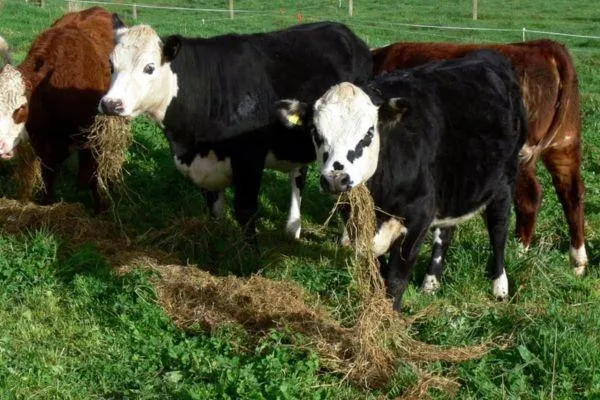
Buy silage with care
Anyone who has experienced the horror of drought will remember the steep price hikes for silage—where prices can quadruple without any concern for feed quality.
If you're planning to buy silage or balage (or haylage) to get through the next winter, there are some important factors you need to consider. First, you must know how much feed you'll need to get through both a dry summer and the winter months. Now is the time to perform serious feed budgeting. If you need to buy supplements, don’t risk trading in an inflated market. Reducing surplus stock early—especially those that aren’t earning their keep—is a crucial part of any feed budget.
Understanding Feed Quality
When buying silage, it’s important to know its quality. A good silage should have:
Dry matter: Above 20% (preferably closer to 25%)
Protein: Around 18-20%
Energy (ME value): At least 10
Don’t buy silage without confirming these figures, which you can obtain quickly through a feed analysis laboratory via your vet clinic. A simple test: If you can easily squeeze water out of a handful of silage, it’s too wet and may be unsuitable for feeding.
What Good Silage Should Look and Smell Like
Silage is essentially pickled grass, and the quality can be determined by the fermentation process. Silage from acetic acid fermentation should:
Be yellow or green-brown in colour
Have a sweet smell and a firm texture
On the other hand, silage from butyric acid fermentation will:
Be olive green
Have a putrid smell
Be soft and slimy
Really bad silage may be green-black like tobacco, dry, and have a burned caramel smell, sometimes with white mould. This type of silage is essentially compost and should never be fed to livestock, as it poses a serious risk of digestive issues and abortions.
Be Cautious with Balage or Haylage
Balage or haylage tends to have around 40% dry matter, 12% protein, and an Energy Value (ME) of 8-9. The challenge with this type of feed is that its composition can vary widely, depending on how it was made. It could have been from a paddock intended for silage that was left too long or hay that got wet and was wrapped and sold as balage. Either way, it will likely be stalky and have highly variable feeding value.
These stalks are also more prone to puncturing the wrapping, leading to wastage. Always request that the vendor open a bale so you can inspect it properly. If you’re unsure, take a sample for analysis. A reputable vendor may already have an analysis available.
Inspecting the Bales
Examine the wrapping carefully for any rips or holes, especially those that may have been repaired too long after the damage occurred. Even small holes can allow air in, leading to mould and spoilage. Avoid buying bales that have been stacked with multiple layers on top, as this can result in splits in the wrap.
Avoid Wasteful and Expensive Feed
You don’t want to end up with silage bales that become permanent eyesores on your property. These bales, if of poor quality, will become expensive compost and unattractive paddock ornaments.

